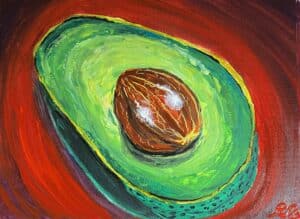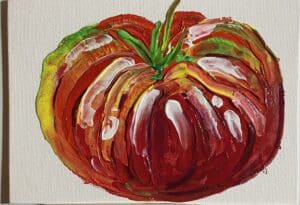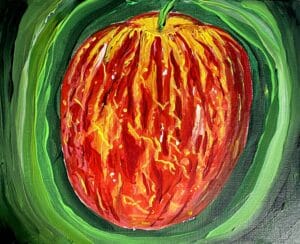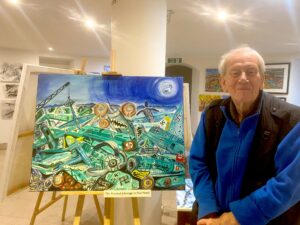 BBC News
BBC NewsBorrowing was £17.4bn last month, the second highest October figure since monthly records began in 1993.

Art has always been distinguished by separate genres within its compass, but it was as late as 1669 that these were actually categorised into distinct genres. An art- theoretician called Andre Felibien ranked them in this order of importance: 1) History Painting; (2) Portraiture; (3) Genre painting; (4) Landscapes; (5) Still Lives.
Of course, the final, casually dismissed category of Still Lives, has formed part of Art’s history from the earliest depictions made by man on the walls of caves, all the way up to the doodlings of David Hockney on his iPad. In the era before Christ, and indeed right up to the Middle Ages, the painting of objects such as fruit, as well as food of other kinds including dead animals, was not just an attempt to arrest the ravages of time. For example, in Egyptian art the placing of depictions of objects in a tomb was considered a practical aid in the journey of the soul towards heaven. It was thought the images would transform into actual nourishment to help the deceased on their travels.

Paul Joyce, Avocado Study
Again, in Roman art, large murals in the villas of the rich showing the bounty of nature, along with the inhabitants of those very productive fields, namely birds and small animals, demonstrated the superiority of an upper elite class and their ability to feast of the best. Pliny the Elder wrote of one artist who came to be called “ a painter of vulgar objects” as he depicted shops, animals and food. But he made it clear that the results were extremely popular and far outsold work of artists in other genres.

Paul Joyce, Avocado No. 2
The fact that Still Live painting is relatively easy to distinguish and therefore categorise, meant that for centuries it was associated with academic principals of depiction, with styles and subject matter being handed down from generation to generation. An Academy, after all, is fundamentally an organ of the Establishment, usually conservative and anti-liberal. The Adademie Francaise up until the Nineteenth Century still had strict guidelines distinguishing subject matter in art, with historical, biblical or religious pictures occupying the highest category and with Still Lives (again) relegated to the outer darkness.

Paul Joyce, Fruit Study
However, the arrival of the Impressionists blew all previous assumptions out of the water. They were more concerned with the emotional impact of colour on the viewer and their choice of subject matter was as wide as any previously written hierarchy. The greatest exponent of this rapid emergence of new approaches to ways of seeing the world was undoubtably Van Gogh. His series of Sunflower paintings took the humble Still Life to heights of greatness he himself, dead by the age of 37, could never have imagined. All of us struggling in his footsteps owe him an immeasurable debt of gratitude.


So, my current attempts to come to terms with this lowest form of art is part inspired by Vincent, of course, but also very much by the “painter’s painter” Paul Cezanne as well. Cezanne famously stated that he wanted “to astonish Paris with an apple”. Well, mine is to attempt to amaze Brighton with an avocado. The images reproduced here are very much the start of a journey to investigate one of the most influential, successful and popular genres in the history of Art. Nature can provide us with so much, particularly in terms of structures, forms and especially colours. It is no accident that most of the best artist’s pigments come directly from actual elements culled from within our natural environment.
I have come to understand even more than before, as I embark on this voyage of discovery, that the marked differences between the application of paint both by brush and palette knife produce totally different results. Using a conventional cotton canvas, a brush will drag across the dimpled cotton texture, frequently leaving details of the individual bristles. Whereas a knife will glide over the surface, allowing colours to mix together, sometimes in an almost magical way. This together with an attempt to use that sensuality that paint has in its very essence, itself attempts to mirror how tactile and toothsome still lives can be. If I can literally make some viewer’s mouths water, I will feel that I have at least in part succeeded. But this of course I shall never know, unless some concerned reader tells me so.

The writer is a celebrated artist and photographer